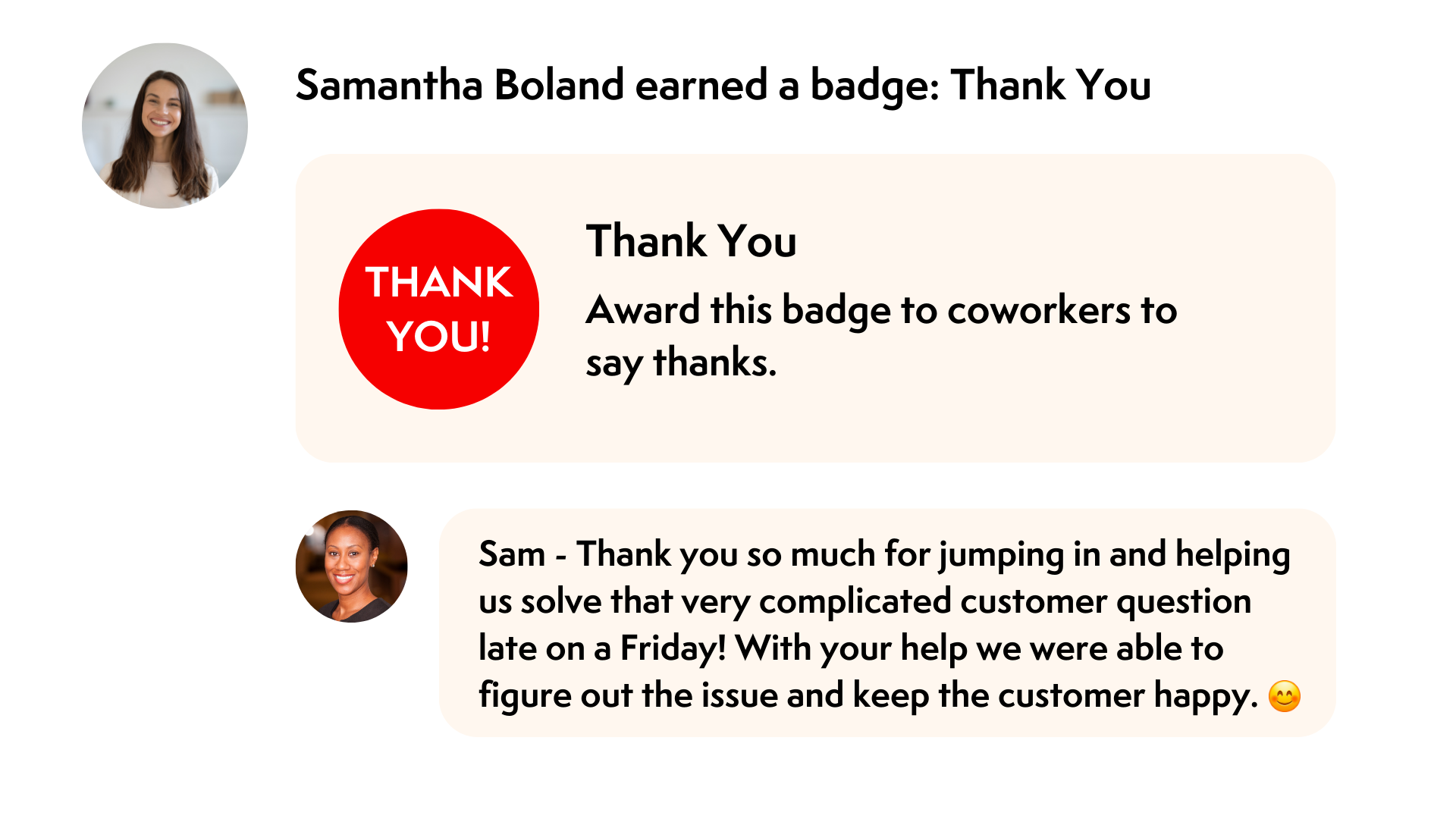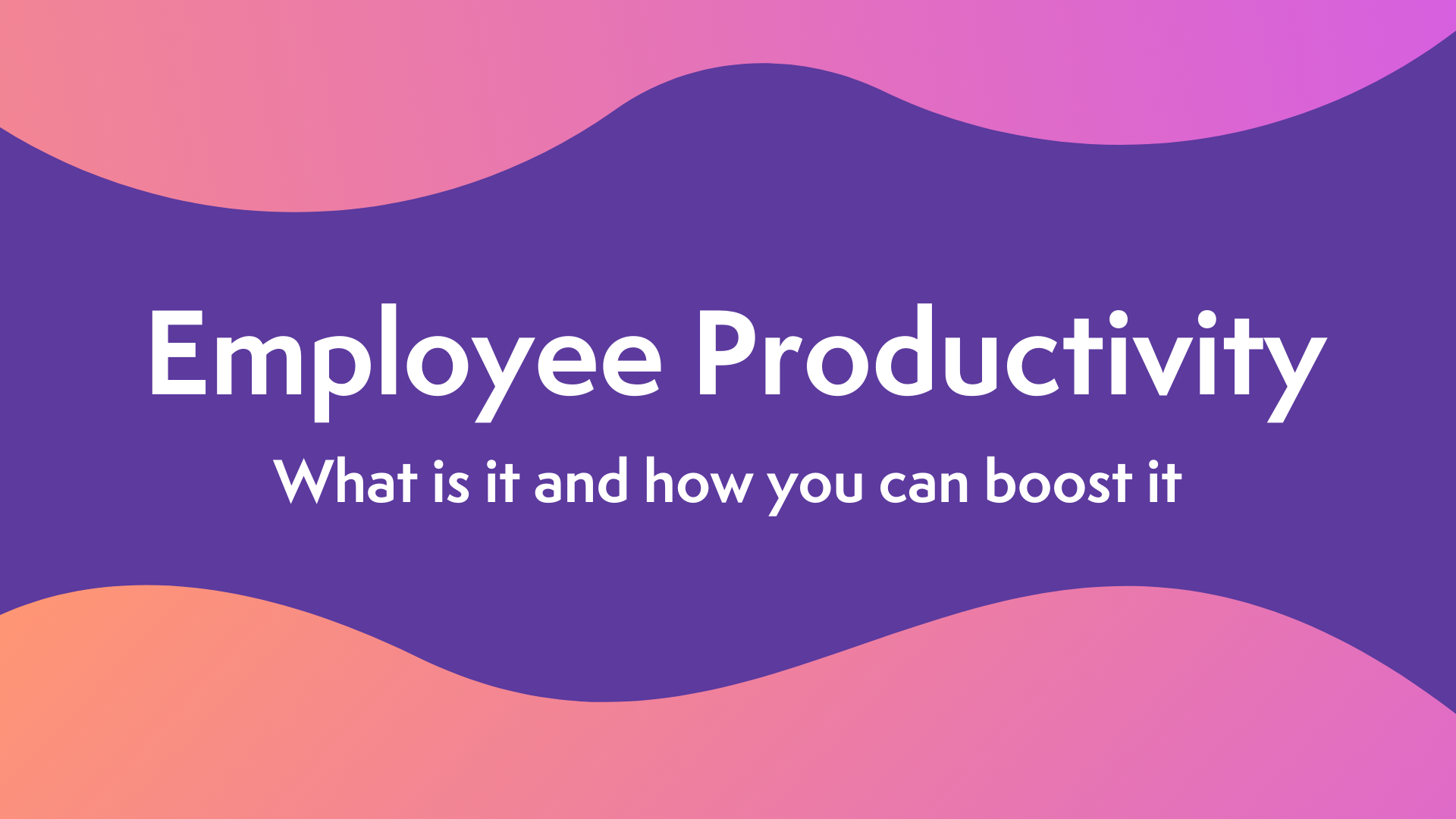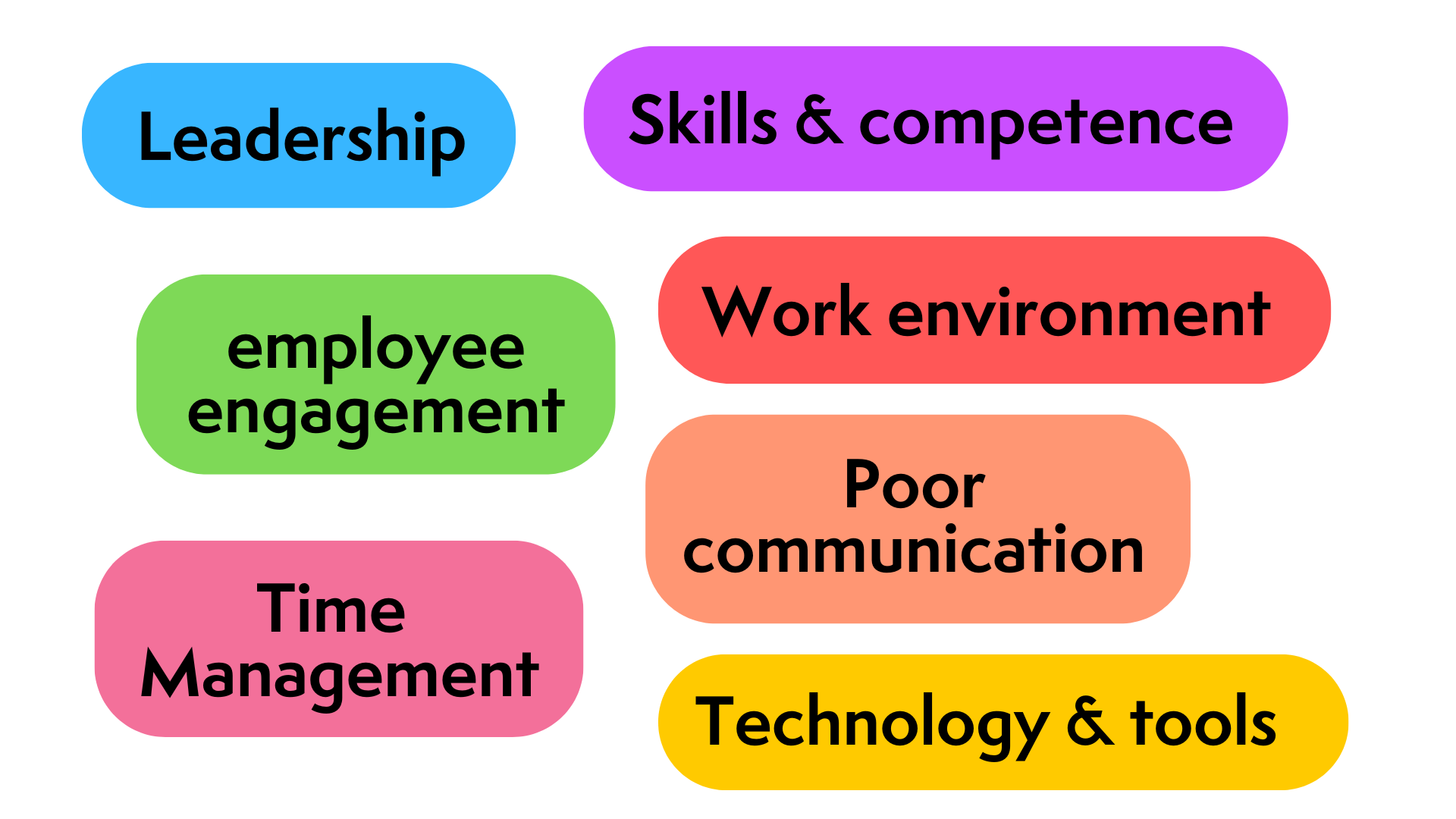It goes without saying, every business wants their employees to be productive. The easy part is understanding why this is important. If a workplace is productive, it will likely experience higher profits, stronger customer experiences, more innovation, a positive company reputation, and so much more. The challenging part is understanding how to create a productive environment that’s long-lasting.
A mindset where many business leaders go wrong is expecting their workers to operate at full capacity every minute of every day. The truth is, employees are not robots and this philosophy isn’t feasible nor realistic. The 2022 Task Management Trends Report found that only 12.4% of workers can dedicate more than 6 hours of their working day to their tasks, and only 53.3% of the time spent on a task can actually be considered to be productive work.
To have real impact, the focus should be on the overall employee experience and work environment of which employees are expected to succeed in. Similar to building a house, a strong foundation will support and maintain longevity. The same goes for increasing employee productivity.
What is employee productivity and why is it important for business?
Employee productivity is the measure of an employee’s output or the demonstrable efficiency by which they complete their tasks. It is a key element for every successful organization because when their employees are productive, their business thrives.
When it comes to assessing and measuring employee productivity in your organization, it’s important to keep two realties in mind.
- What productivity means and how it’s measured is relative to the department or business structure. The goal of a sales team, for example, will be tied to revenue and the number of deals closed. But a development team will measure productivity by product quality and the creation of innovative projects. The key performance indicators, or KPIs, are different, which changes how productivity is understood by various teams.
- Employee productivity is a balanced effort. That’s why it’s important to take into account the quality of work and the efficiency or pace that an employee completes projects. An employee who takes more time on one big project might produce more value than another who rushes through a list of tasks with little care about their output.
Aside from wanting to make significant impact on business outcomes, companies care about measuring employee productivity because it helps them identify roadblocks that could be prohibiting employees from excelling. Did the marketing team miss their KPIs because of market trends? Or was there a lack of communication between team members during a big campaign? Or maybe employees had everything they needed to be successful but goals weren’t met due to personal work habits.
Notice how we didn’t immediately assume it’s the fault of the individual employee? The majority of today’s employees want to be productive and make a significant impact in where they work—in fact, it’s a huge motivator for Gen Z. Believing and trusting in your employees is one of the most powerful ways to establish stronger working relationships, to boost morale, and to see more productive employees.
Bear this in mind as you examine productivity levels and think through how to influence them. Rather than taking the approach of cramming in more to-dos and threatening work life balance of team members, take a step back and look at the bigger picture. Here’s different ways you can improve productivity while also creating a work environment that supports quality work and the well being of your employees.
How do we measure workforce productivity levels?
Depending on the business leader and the kind of organization they run, success and the way it is measured will differ. As we get more granular, the way we measure employee productivity on an individual and team level will also take on different forms based on departments, roles, and an organization’s goals.
Keeping that in mind, here are some common metrics used to measure an employee’s productivity:
- Overall output
- Time versus quality of work
- Deadlines and development goals
- Employee satisfaction and retention
- Customer satisfaction
These metics are not universal so depending on the department or organization, some may not make sense. For instance, you can’t use customer service metrics to measure the productivity of a procurement manager.
To make sure you take the right approach, first get an understanding of how an individual employee works so you can then piece it all together to measure their team’s productivity. Using qualitative and quantitive metrics is a great place to start. These methods allows us to consider the “why” and “how” behind employee productivity and to then make improvements that will lead to lasting changes.
Measure employee productivity using qualitative methods
Numbers are powerful, but so are words. Qualitative research is the collection of nonnumerical data, which typically means focus groups, interviews, and case studies. In the context of improving and measuring productivity, you might want to consider annual reviews, anonymous feedback surveys on the digital workplace, one-on-one meetings, or even observations from trusted supervisors.
This qualitative data will help you figure out why employees may be underperforming, how engaged employees are, how they approach their current challenges, and any changes that could be implemented to result in employee productivity improvement.
Measure employee productivity using quantitative methods
Let’s say from one-on-ones and surveys you learn that teams are boggled down with too many emails and they’re feeling disconnected because of it. A quantitative approach will help you translate this problem into data so you can quantify the impact.
To do this, technology, tools, and numbers will tell the story. Taking our scenario, you may find with time tracking tools that on average, employees are spending two hours of the workday in their inboxes, which amounts to 10 hours a workweek! You can then use this information to make improvements. Maybe it’s advising managers to only send emails with purpose or it could be exploring new internal communication software to reduce emails while reaching workers in a more efficient way.
What factors impact employee productivity?
There’s many factors that can affect employee productivity. While the work environment plays a pivotal role, there’s also personal components that can dictate how productive a person will be. Even the most driven employees will have periods of time where they are not working to their fullest potential. We all get sick, we all get tired, and we all have external factors outside of work that can influence how we concentrate and operate.
By understanding the ebbs and flows that affect productivity levels, we can create processes and coping mechanisms to manage down periods more effectively. Some of the most common factors we see affecting workforce productivity include:
Time management
Time management is a common challenge for many employees, but the reasons why it happens can vary. Sometimes it falls on the individual—they may lack confidence in prioritizing tasks, spend too much time on unimportant items, or can’t say no when they’re at full capacity. Other times external factors could be at play, such as unreasonable workloads, too many time-wasting meetings, inadequate training, or understaffed teams, leaving employees with limited time to tackle their own workload.
Skills and competence
Is the employee you hired actually qualified for the role? With one study showing that up to 70% of people have lied on their resume or job application at some point (a statistic that no one should be proud of!), it, unfortunately, means that the person you believed in might not have the skills and training to be successful. Without the prior experience and skillset, there is no way that they will know how to complete their tasks efficiently and meet the standards expected of them.
Technology and tools
Can the employee successfully and confidently navigate the business tools they need to do their job? Nowadays, we expect an employee to intuitively use all sorts of technology. However that expectation might be the exact reason why an employee doesn’t speak up about a particular software that they don’t know how to use—and in some cases, it could be slowing them down significantly.
Leadership
Unfortunately, there are situations where managers can be more of a hindrance than a helpful resource. If an employee is working under bad leadership, they will be likely wasting a lot of time placating their boss or picking up slack that their manager should be handling. Again, it just takes the employee’s attention away from where it should be.
Work environment
A productive work environment makes for productive employees. No workspace can be completely perfect, but there are ways to build a better employee experience! Do you have designated meeting rooms and breakout areas? When working remotely, do employees have a sufficient WiFi connection to maintain connectivity? A poor working environment can disrupt our patterns, focus, and productivity.
Employee engagement and motivation
Are employees engaged and motivated? It might sound obvious, but an unengaged employee is not going to have the drive to make the most out of their workday. Their mind will wander easily, and they may spend more time on their phone than on their laptop. They need to be re-engaged and motivated to interact with their work, or they will never reach their full potential.
Poor communication
A task was updated in the company project management software, but this was not the update discussed last week. And now the project manager is asking where this part of the task is, but you can’t find the original email thread, and the department lead is not answering their messages.
Sound familiar? Poor communication can quickly grind employee productivity to a halt and cause mass confusion. With inadequate communication costing $4200 per employee per year, we need to do better.
How can we improve employee productivity?
Improving job productivity is an ongoing priority for many managers. Part of the challenge is keeping up with continually changing workplace trends and making sure workflows are in line. Another big piece is the work it takes to uncover root challenges that are impacting employee productivity. Very few people choose to have poor performance at work. More likely than not, there is a cause that affects employee motivation. Fix that, and you will see a rise in job satisfaction and overall productivity.
Here are some key changes you can make to improve and influence employee productivity.
Automate tasks
One of the perks about working in the modern era is advanced technology. Use it to reduce mundane tasks that take up too much time. Research shows that we are wasting 3-4 hours per day on menial tasks rather than focusing on ones that actually require our attention.
Reallocate energy towards work that matters. By automating repetitive tasks, you’ll allow employees to focus on the crucial projects that need their attention the most.
Adopt frequent, clear, and meaningful communication
Strong communication is essential. Adopting clear and open lines of communication not just between teams but across a whole company is a must. Give employees the right tools to be able to communicate and set up clear guidance as to when and where different messages should live.
A major project update? Make sure it’s kept in the project folder. A company poll or fun competition to make everyone smile at the start of the day? Maybe best kept to the front page of your company intranet.
Nurture a sense of purpose
With Gen Z and millennials taking up the workplace, creating a sense of purpose has never been more important. These generation of workers aren’t solely motivated by a salary and benefits; they thrive when given a mission to work for and believe in.
If you want to increase employee performance, embody core values that makes people feel good to be part of. You can donate to a charity nominated by employees each month, or promote impactful stories about the business and customers to show employees the difference they make in the world. If employees see the impact their contributions make, they are more likely to be engaged and proud of their role.
Create a positive work environment
Everyone deserves a positive work environment where they feel psychologically safe. Creating a safe space, where people can share ideas and feedback, should definitely be on the list when looking to improve employee productivity!
A positive and productive work environment can take many forms. It can be fostering a no-blame culture. It can promote positivity and celebration with shouts out a team member and celebrate all of your wins together each month. It might even involve introducing flexible working hours and remote work. Create a working environment that best serves employees’ productivity, and they will feel more engaged and ready to take on their tasks.
Implement growth and development opportunities
Workers want grow professionally. 94% of employees would stay longer in a role if they received training and development. This is a win-win opportunity for both the employee and the employer.
By offering growth opportunities, you make your organization a place where employees stay (while reducing employee turnover, too.) You also get the chance to nurture in-house talent and attract people who want to pursue careers, not just a job. On the other end, the employee has their own personal goals they want to reach, which adds more fuel to their productivity.
Increase accountability and responsibility
Improving employee productivity requires you to examine employee engagement levels. Sometimes, engagement is low simply because your employees are bored. And when work becomes stale, so do the results. To combat this, consider increasing or mixing up responsibilities. This gives your workers a new purpose and a new challenge to overcome.
Encourage self-care and acknowledge efforts

Employee recognition is also an important element for improving employee productivity. In fact, employees are 2.2x more likely to go above and beyond their regular workload. Build a company culture that celebrates the little wins and the major milestones.
Offer appropriate incentives
Employees deserve to be compensated for their work. Appropriate incentives along with a healthy salary can boost employee morale and increase a team’s productivity levels. It all feeds back into creating that great company culture. Each individual employee should feel like they are adequately compensated and incentivized for their role.
This could look like high 401k matches, free snacks and healthy drinks in the office, or time for self-care, PTO, and paid family leave.
Provide constructive feedback and support
Constructive feedback and support are a great way to identify and measure productivity challenges. Managers should have consistent chats with their teams and be collecting thoughts and feelings from their members. This is a great way to have transparent and honest conversations about what’s working and what’s not. Managers can then take the feedback to leadership and advocate for improvements.
Source appropriate tools and technology
Technology can make or break an employee’s productivity. Gather employee feedback about what everyone finds valuable and what slows them down. If multiple people flag the same issue with one tool, maybe it is time to explore other options. If just a few people have issues, perhaps it is time to schedule a learning session on the company calendar. Either way, you can’t expect to see strong employee engagement if people can’t properly use the tools needed to aid their tasks.
Trends in employee productivity
When it comes to the modern workplace it’s always important to keep your eye on trends that will keep your workplace fresh, efficient, and ahead of the competition. As it pertains to employee productivity, here’s some of the latest patterns to consider:
Embrace the impact of AI and automation

Check out Axero’s AI knowledge management tool, Copilot! We’ve made it easier than ever for you to search through your knowledge management system by giving you the ability to ask Copilot a question, and then quickly get the answers and resources you need.
Support the rise of remote work
Since the pandemic, remote work has become incredibly common. Many employees work on a hybrid basis, spending some days at home and others in the office. This can have a positive effect on employee productivity levels because they can more adequately balance their workloads, aiming for collaboration on days in the office and focus on individual tasks when working from home.
Focus on employee well-being
There has been a massive shift in favor of employee well-being and mental health over the past few years. Companies are recognizing that their employees want to be taken care of—and customers want to know the companies they support are also taking care of their people. Introducing duvet days, cooking classes, and even lunchtime yoga sessions can all count as a drive toward improving employee health and well-being.
Enhance the employee experience
Employee experience is everything that an employee will come into contact with at a company, from job ads to exit interviews. We recently covered the topic of employee experience, which you should check out! Still, for now, we would like to highlight it’s importance because people-centric environments are a huge trend for employee productivity. Many of today’s employees operate in the mindset that if you take care of them, they will take care of you.
Leverage data-driven insights
It may seem like measuring employee productivity is rooted in conversation and discussion. Remember there’s a lot of room to track and measure data. Metrics like the number of tasks completed in a week, or the average time spent on repeated tasks says a lot. Many tools are emerging on the market that measure these important data-driven insights, then present them in an easily digestible format for managers to leverage. In fact, check out these employee experience software platforms and see for yourself!
Boost workplace productivity with Axero

Technology, too, can be a game changer. Axero’s award-winning intranet software combines knowledge management tools with a company-wide internal communications platform to create a one-stop shop for everything an employee needs. It’s the perfect place to post employee surveys, centralize resources, and connect your entire workforce so everyone is as fulfilled and productive as possible.
Ready to see Axero in action for yourself? Book a demo today!

















 info@axerosolutions.com
info@axerosolutions.com 1-855-AXERO-55
1-855-AXERO-55


